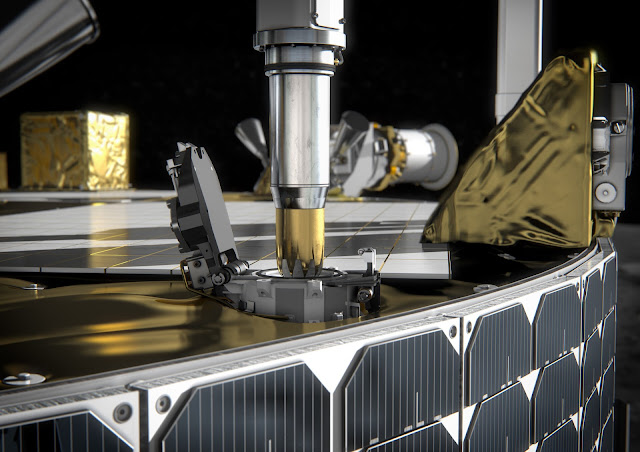ISS - Expedition 66 Mission patch.
March 11, 2022
Two astronauts spent the day getting their spacesuits and tools ready for a spacewalk set to begin on Tuesday at the International Space Station. The rest of the Expedition 66 crew focused on a variety of combustion and space biology research on Friday.
Flight Engineers Kayla Barron and Raja Chari worked throughout Friday preparing for a six-and-a-half hour spacewalk scheduled for 8:05 a.m. EDT on Tuesday. Barron and Chari checked out spacesuit emergency jet packs and other suit components including lights, cameras, and data recorders. They also configured a host of tools inside the U.S. Quest airlock they will use during their external maintenance job. The pair on Tuesday will install modification kits on the Starboard-4 truss structure that will ready the space station for its third roll-out solar array. NASA TV begins its live spacewalk broadcast on Tuesday at 6:30 a.m.
Image above: NASA astronaut Kayla Barron works inside the Life Science Glovebox conducting botany research for the Plant Habitat-05 investigation. Image Credit: NASA.
Astronauts Mark Vande Hei of NASA and Matthias Maurer of ESA (European Space Agency) took turns installing combustion science hardware in the Kibo laboratory module at the end of the week. Vande Hei later serviced samples for the Space Biofilms study that seeks to prevent molds from growing and impacting spacecraft systems and crew health. NASA Flight Engineer Tom Marshburn worked in the U.S. Destiny laboratory module servicing gear supporting a fire safety study that could inform future spacecraft designs.
Cosmonauts Anton Shkaplerov and Pyotr Dubrov continued evaluating the lower body negative pressure suit that expands veins and tissues in the lower body possibly preventing vision changes and head pressure in microgravity. Shkaplerov then attached sensors to himself and jogged on the Zvezda service module’s treadmill for a Russian exercise study. Dubrov collected microbe samples from station surfaces and photographed them for analysis.
International Space Station (ISS). Animation Credit: ESA
Related links:
Expedition 66: https://www.nasa.gov/mission_pages/station/expeditions/expedition66/index.html
U.S. Quest airlock: https://www.nasa.gov/mission_pages/station/structure/elements/joint-quest-airlock
Starboard-4 truss structure: https://www.nasa.gov/mission_pages/station/structure/elements/truss-structure
Kibo laboratory module: https://www.nasa.gov/mission_pages/station/structure/elements/japan-kibo-laboratory
Space Biofilms: https://www.nasa.gov/mission_pages/station/research/experiments/explorer/Investigation.html?#id=7955
U.S. Destiny laboratory module: https://www.nasa.gov/mission_pages/station/structure/elements/us-destiny-laboratory
Lower body negative pressure suit: https://blogs.nasa.gov/ISS_Science_Blog/2015/06/02/rubber-vacuum-pants-that-suck/
Zvezda service module: https://www.nasa.gov/mission_pages/station/structure/elements/zvezda-service-module.html
Space Station Research and Technology: https://www.nasa.gov/mission_pages/station/research/overview.html
International Space Station (ISS): https://www.nasa.gov/mission_pages/station/main/index.html
Image (mentioned), Animation (mentioned), Text, Credits: NASA/Mark Garcia.
Best regards, Orbiter.ch




















































